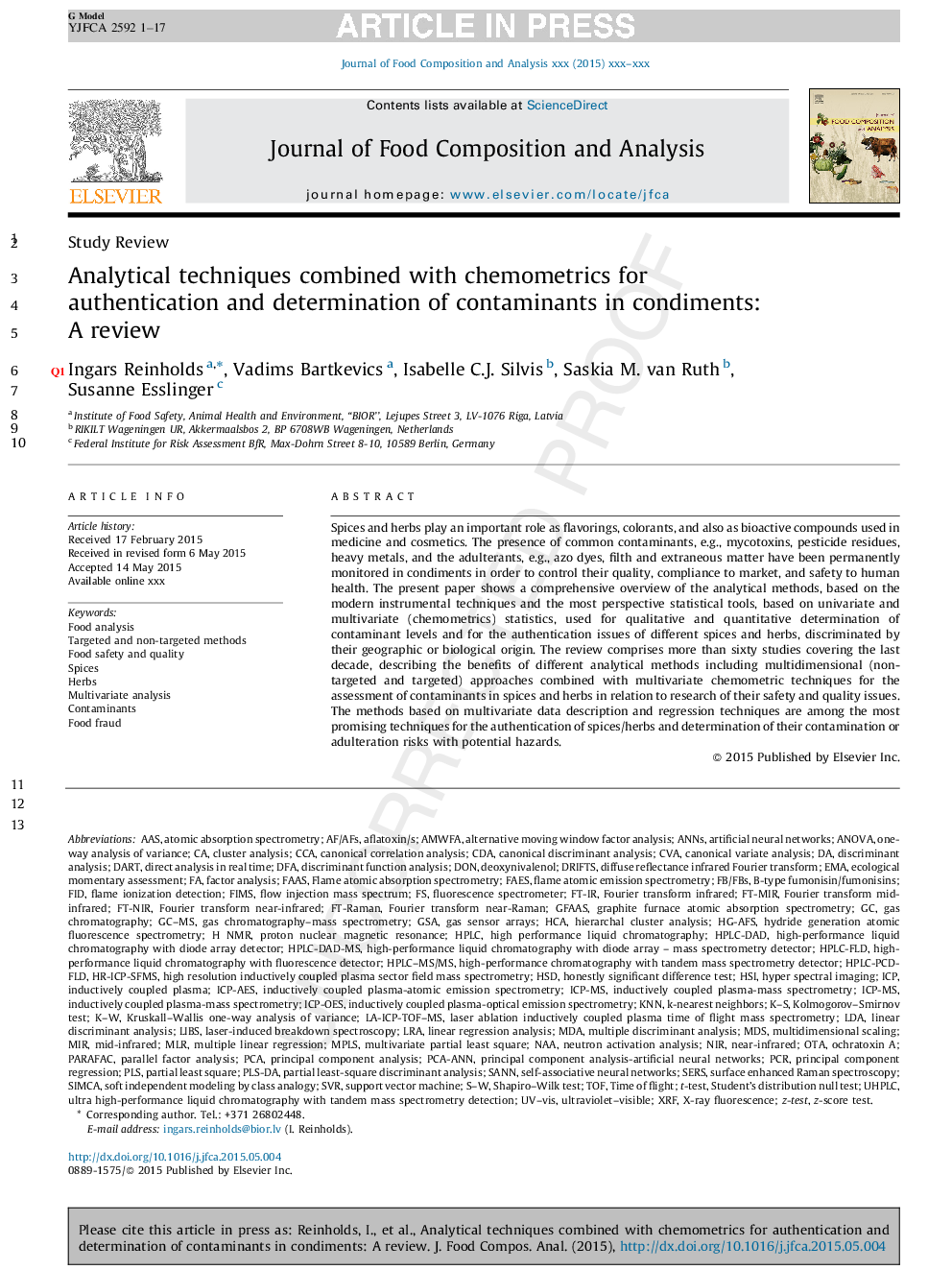| Article ID | Journal | Published Year | Pages | File Type |
|---|---|---|---|---|
| 7620339 | Journal of Food Composition and Analysis | 2015 | 17 Pages |
Abstract
Spices and herbs play an important role as flavorings, colorants, and also as bioactive compounds used in medicine and cosmetics. The presence of common contaminants, e.g., mycotoxins, pesticide residues, heavy metals, and the adulterants, e.g., azo dyes, filth and extraneous matter have been permanently monitored in condiments in order to control their quality, compliance to market, and safety to human health. The present paper shows a comprehensive overview of the analytical methods, based on the modern instrumental techniques and the most perspective statistical tools, based on univariate and multivariate (chemometrics) statistics, used for qualitative and quantitative determination of contaminant levels and for the authentication issues of different spices and herbs, discriminated by their geographic or biological origin. The review comprises more than sixty studies covering the last decade, describing the benefits of different analytical methods including multidimensional (non-targeted and targeted) approaches combined with multivariate chemometric techniques for the assessment of contaminants in spices and herbs in relation to research of their safety and quality issues. The methods based on multivariate data description and regression techniques are among the most promising techniques for the authentication of spices/herbs and determination of their contamination or adulteration risks with potential hazards.
Keywords
Related Topics
Physical Sciences and Engineering
Chemistry
Analytical Chemistry
Authors
Ingars Reinholds, Vadims Bartkevics, Isabelle C.J. Silvis, Saskia M. van Ruth, Susanne Esslinger,
